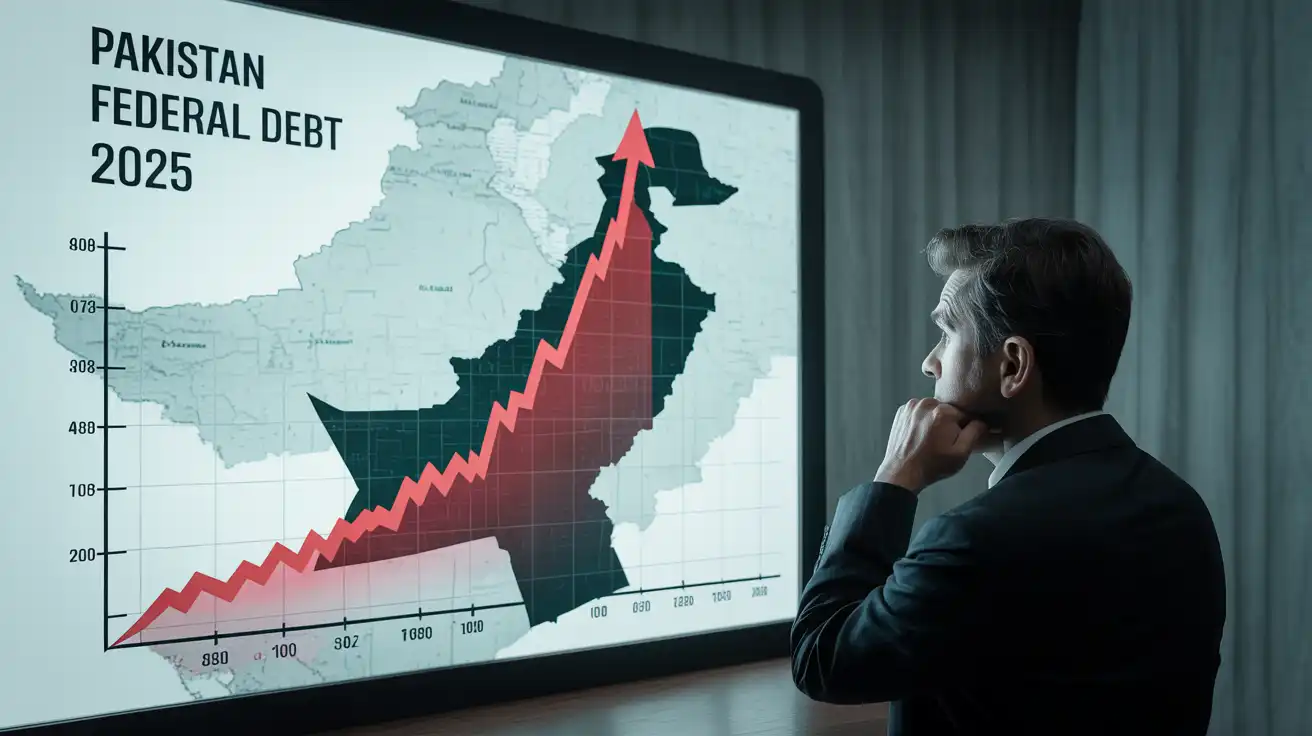ISLAMABAD – The State Bank of Pakistan (SBP) disclosed that the accumulating domestic and external borrowing is propelling concern towards Pakistan’s economic sustainability. The country’s federal debt has reached a staggering 73.6 trillion Rs by the end of March 2025.
This indicates an increase of almost 11.9 trillion Rs year on year, indicating the dependence on foreign and local lenders to sustain the government. Furthermore, within just the last quarter, the federal debt has increased by an additional 2.7 trillion Rs.
Domestic Debt: The Largest Portion
As per the latest SBP report, domestic debt continues to dominate Pakistan’s debt portfolio, surpassing 45.5 trillion Rs, which is about 61.8% of the total federal debt. This section contains:
- Long-term government bonds (PIBs)- Rs 21.8 trillion
- Treasury Bills (T-Bills) – Rs 7.2 trillion
- National Saving Schemes (NSS) – Rs 4.9 trillion
- Other domestic liabilities, including sukuk – Rs 11.6 trillion
The most recent SBP issued report shows that domestic debt outweighs Pakistan’s debt portfolio. More specifically, the other segment surpasses 45.5 trillion rupees, which is close to 61.8% of the total debt.
The government is heavily reliant on short-term borrowing through T-Bills and Pakistan Investment Bonds (PIBs) in an attempt to alleviate budget deficits. However, experts caution that these types of measures result in liquidity pressure, which in turn could place the country in a debt rollover trap.
External Debt Soars as Currency Stabilises
Pakistan’s foreign debt is at (Rs 28.1 trillion, and is 38.2% of the total debt. While the rupee has temporarily stabilized against the dollar, this is largely owing to huge disbursements from multilaterals like the IMF, World Bank, ADB, and bilateral loans from China and Saudi Arabia. At the same time, the external debt continues to be huge.
Statistics – Key players from the external sector, according to the SBP, were:
- Rs 17.5 trillion in funding from multilateral and bilateral loans,
- Rs 4.2 trillion of commercial bank loans,
- Rs 3.9 trillion comes from Eurobonds and Sukuk.
The repayment squeeze is expected to increase in the second half of the year, when Pakistan will have to pay more than $25 billion in debt service, covering principal and interest.
Debt to GDP Ratio Still Alarming
Pakistan’s debt-to-GDP ratio stands at 76% now – much higher than the threshold of 60% recommended by the Fiscal Responsibility and Debt Limitation Act (FRDLA). Still, economists warn that the debt, without immediate structural reforms and tax revenue-generating measures, could become increasingly unwieldy.
Former Adviser to the Ministry of Finance, Dr. Khaqan Najeeb said on X:
Impacts on the Common Citizen
Debt repayments drain Rs7.3 trillion in annual interest payments; almost 60% of federal revenues, the fiscal space for further investments in health and education are petering out, and all to service debt.
The debt-fueled model also puts upward pressure on inflation, utility tariffs, and tax rates, impacting the already suffering masses through economic stagnation, who are at the bottom and middle-income strata.
What Lies Ahead?
Fiscal discipline is gone, meets another election year in Pakistan. Political constraints impose limits on the government’s writ for reducing its spending and imposing effective tax reform. In the meantime, talks of a new IMF programme are in full swing after the country will need its third bailout to bridge the external financing gap.
Conclusion
Pakistan’s debt is not just a number; it is a reflection of wide-based economic imbalances that need to be properly addressed immediately. The more we borrow, the bigger the risks to fiscal immunity and fiscal development.
Will policymakers finally make the tough decisions needed to reverse this trend?








